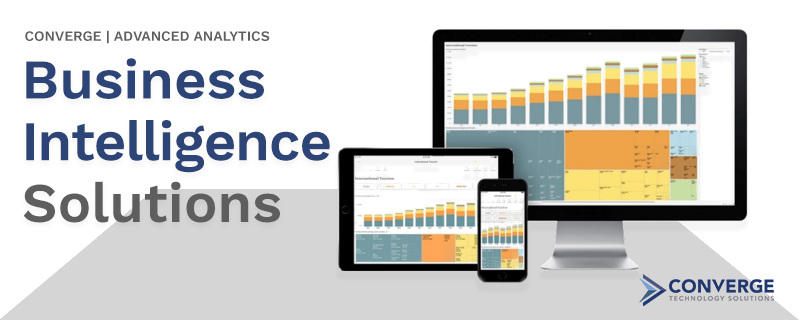Better tools, better business decisions
Business intelligence tools provide the ability to do just that. By collecting, storing, and analyzing data, business intelligence tools give organizations the insights they need to make better decisions and improve their daily operations. If you’re looking to get a quick overview of business intelligence architecture, you’ve come to the right place. In this article, we’ll break down the basics of business intelligence architecture, including its key components and how they work together.
What is Business Intelligence Architecture?
Business intelligence architecture is the framework that is used to design, develop, and implement business intelligence solutions. It provides a blueprint for how data is collected, processed, and analyzed to provide insights that can help organizations make better decisions.

The architecture includes a variety of components, such as data warehouses, data marts, data mining tools, reporting and visualization tools. These components work together to help organizations turn data into actionable insights. With that in mind, BI architecture typically includes three main components to become successful:
Data Management
When it comes to data, more is not always better. Oftentimes, organizations can find themselves overwhelmed with data that is not managed correctly. This is where data management comes in, which is a process that helps organizations to collect, store, and process data in a way that is efficient and effective.
Data management is essential for any organization that wants to use data to drive decision-making. Without proper data management, it can be challenging to know what data is essential and how to use it effectively.
Additionally, data management can help to ensure that data is accurate and up-to-date, which is essential for making reliable decisions.
Data management is a critical part of BI architecture because it ensures that the data used for decision-making is of high quality and is easily accessible.
Data Analytics
After data is collected and organized, it must be analyzed to glean insights from it. Data analysis can be performed using various methods, such as statistical analysis, data mining, and predictive modeling.
Technology
The technology component of a business intelligence architecture is the hardware and software that are used to collect, store, and analyze data. This includes the servers, storage systems, databases, and application software that is used to manage and analyze data. Cloud-based solutions and data platforms can also be an alternative to bring even more flexibility to your team.
How to design a business intelligence architecture
There are many different ways to design a BI architecture, as the specific components and configuration of a BI architecture will vary depending on the organization’s needs. However, there are a few key elements that are essential to all BI architectures:
- Data warehouses and data marts: : A data warehouse is a central repository for all the data collected by an organization. Data marts are smaller data warehouses that are designed to support specific departments or business functions (ex. sales, marketing, finance, HR). BI architectures typically include one or more data warehouses or data marts.
- ETL (extract, transform, and load) tools: ETL tools are used to extract data from various sources, transform it into a format that can be stored in a data warehouse or data mart, and then load it into the repository.
- OLAP (online analytical processing) tools : OLAP tools are used to analyze data stored in data warehouses and data marts. OLAP tools enable users to slice and dice data, drill down to detailed information, and roll up data to see high-level trends.
- Reporting and visualization tools: Reporting and visualization tools are used to create reports and dashboards based on data from data warehouses and data marts. These tools make it easy for users to see the information they need in a format that is easy to understand.
- Data mining tools: Data mining tools are used to discover hidden patterns and relationships in data. Data mining can be used to predict future trends, identify customer segments, and more.
Conclusion
The benefits of a BI system are many, but its success depends on its architecture. A well-designed BI architecture will support the organization’s needs and allow the system to be effectively used to its full potential.
A well-designed BI architecture provides the foundation for an effective business intelligence program. It ensures that data is appropriately collected and stored, that the right tools and technologies are in place, and that users have the information they need to make better decisions.
By clearly understanding the data and how it flows through the system, it is easier to add new data sources or make changes to existing ones.
At Converge | Advanced analytics, we believe that the best business intelligence software is the one that meets the specific needs of your organization. That’s why we offer a wide range of BI solutions, from data visualization and reporting tools to predictive analytics and big data solutions.
Contact us today, so we can discuss how we can help make data science, machine learning, and all things AI simpler for you!
About Newcomp Analytics, A Converge Company
We are a team of strategic thinkers, creative developers, and data experts, built to help organizations transform and thrive in today’s digital world. We provide solutions specific to your organization’s challenges and needs, creating an analytics roadmap to long-term success. As your guide, our job is to simplify and advise as we take you through this Data to Insight journey together.
Michael Langton
President of Newcomp Analytics
A Converge Company
Thanks to our Business Partner
For more than a century IBM has been dedicated to every client’s success and to creating innovations that matter for the world. Using IBM technology, Converge / Newcomp is asked to solve some of the most complex issues our customers are facing like decision optimization, forecasting and machine learning. IBM’s cloud and services are our workbench, putting specialized analytics tools and world-class computing power at anyone’s fingertips.




